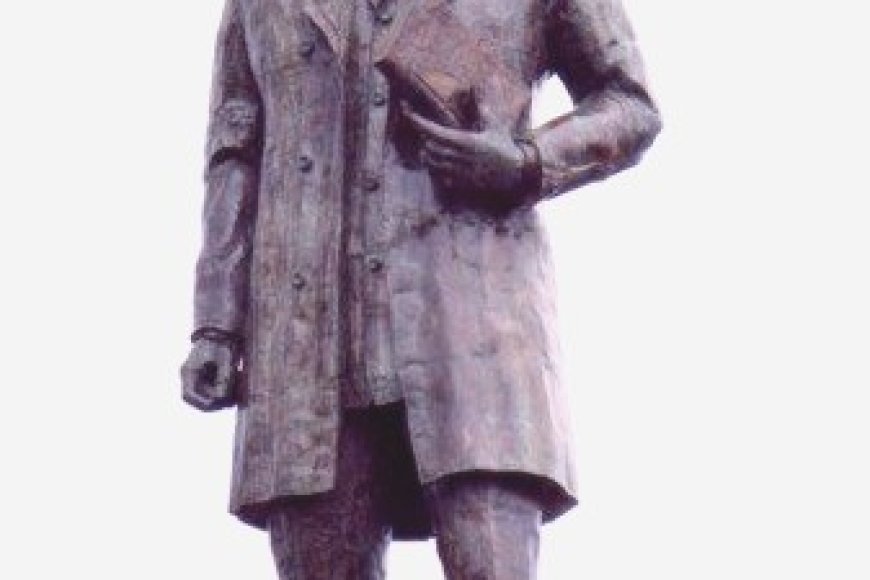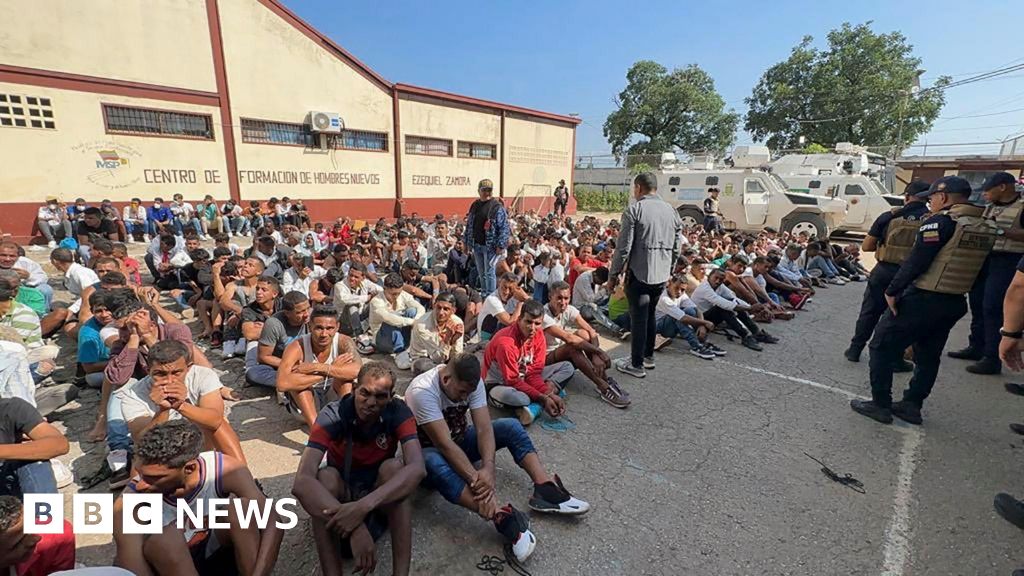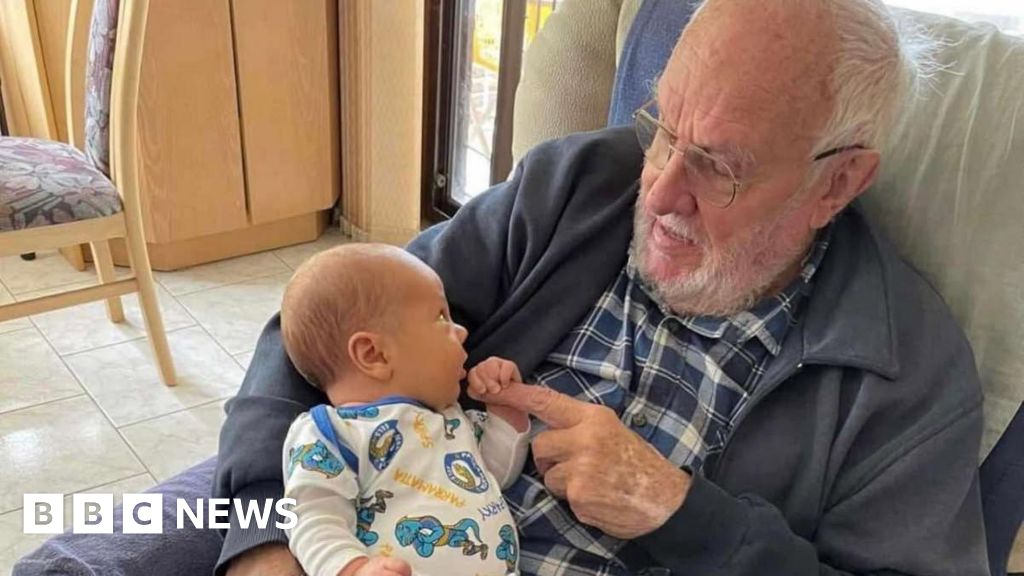Sunday, April 20, 2025 | 2 a.m.
At 80, Judy Ishibashi still spends her Saturdays wielding protest signs, her resolute spirit undimmed by age.
She stands vigilant, concerned that the social progress she witnessed throughout her lifetime faces new threats.
An active Washoe County Democratic Party member, Ishibashi has organized opposition to President Donald Trump’s policies. Now, she focuses on confronting the resurrection of the Alien Enemies Act — a measure not deployed since World War II, when it devastated her family and thousands of other Japanese Americans, tearing apart communities and leaving generational scars.
Trump, bolstered by the U.S. Supreme Court amid ongoing litigation, invoked the 1798 law, a wartime authority allowing the president to detain or deport the natives and citizens of “an enemy nation,” to accelerate his deportations of alleged Venezuelan gang members.
His administration has, without due process, deported more than 200 men to El Salvador, a country accused of human rights violations. There, they’re being held in the country’s mega-prison, the Terrorism Confinement Center, or CECOT. The Supreme Court temporarily blocked the administration’s use of the Alien Enemies Act early Saturday before the law could be utilized for another round of deportations for the accused gang members.
Trump referred to those detained as “barbarians,” including Kilmar Armando Abrego Garcia, an immigrant with no criminal record who was living in Maryland under protected status. Despite the government admitting it erroneously sent him to El Salvador and a federal court order to bring him back to the United States, Abrego Garcia languishes in CECOT.
With the conditions of CECOT and Abrego Garcia’s case in mind, advocates have criticized the president’s invocation of the Alien Enemies Act, calling it an overreach of his executive authority that bypasses existing immigration requirements to fulfill his agenda.
“We need to know what we’re doing to these aliens, that even if we let them out of wherever the hell they are right now, or wherever they’re going, their trauma isn’t going to end there,” Ishibashi said. “It’s going to go on and it’s going to affect generations, and we need to be aware of what we’re doing.”
Ishibashi speaks from experience: Her parents’ internment during WWII shaped her childhood.
After Ishibashi’s mother, Akiko Abe, gave birth to her firstborn while detained in Amache, or the Granada Relocation Center, in Powers County, Colo., she determined her second child would not begin life in an internment camp.
“She fought like hell, and I’m sure they were glad to get rid of her,” Ishibashi said, reflecting on how Abe successfully advocated for her family’s application for resettlement in Elko to be quickly processed.
With Trump employing the act for the first time in over 80 years, Japanese Americans are drawing parallels between its use today and their experiences.
Forcible removal
Ishibashi’s family was among the hundreds of thousands of Japanese Americans interned during WWII, when then-President Franklin D. Roosevelt invoked the Alien Enemies Act immediately after the 1941 bombing of Pearl Harbor.
His administration said the internment camps for German, Italian and Japanese nationals in the United States were in the interest of national security. However, officials often loosely applied “alien enemies” to Japanese Americans. Ishibashi’s father, Joe Y. Abe, who had come to the U.S. when he was 2 years old but wasn’t naturalized because of eligibility requirements at the time, was still interned.
While the forcible removal to internment camps of those with Japanese heritage began after Pearl Harbor, the prejudice didn’t start there, said historian Kristen Hayashi. Hayashi serves as a curator and director of collections management and access at the Japanese American National Museum — inspired by her father’s volunteering there and a mission to preserve her own family history.
Racism was clear from the early waves of Japanese immigration, which began with Hawaii in the 1850s, then continued as more people emigrated to the West Coast in the late 19th century — founding restaurants and grocery stores in what would become known as Little Tokyo in Los Angeles, Hayashi said.
“Japanese immigrants and other immigrants of color aren’t able to just live anywhere,” Hayashi said about that period. “And so this neighborhood of Little Tokyo kind of becomes this ethnic enclave out of necessity, but also a refuge for them out of necessity too because there (was) so much discrimination and prejudice.”
That prejudice culminated in white supremacy groups like the Asiatic Exclusion League, founded in California with the specific mission of preventing immigration from Asian countries. The group decried the growing number of Japanese immigrants in the workforce and claimed they caused “peace officers more trouble than the people of any other nationality.”
In a 1907 meeting, the league continued spreading that sentiment and characterized the high rate of Japanese immigrants being recruited to work on railroads as a “scheme.”
“The evidence is at hand to show that some individual or corporation is engaged in importing numbers of Japanese laborers to work on the railroads of the Northwest,” reads the meeting proceedings kept in the University of Minnesota Twin Cities library archive. “The plan is cunningly devised and persistently, accurately, and so far, successfully carried out.”
Fumie Shimada’s father had worked for the Southern Pacific Railroad for over 20 years, but she said the railroad fired him during wartime. That hostility from the Asiatic Exclusion League meeting isn’t something she remembers from her childhood in Sparks. Instead, she recalls friends she remains in contact with today and a community where everyone knew each other.
Her father’s firing hampered her family’s arrangements, with him taking odd jobs and her mother going to work — “pulling weeds in the onion fields for survival,” as Shimada puts it.
Shimada’s wartime memories are scarce since she was only a few years old then. Her parents were never detained, though she would grow up to marry a man who had been held at Granada.
While internment hadn’t been her reality, she makes an annual pilgrimage with her local chapter of the Japanese American Citizens League to one of the best-preserved war relocation camps, now under the National Park Service as the Manzanar National Historic Site.
Manzanar’s isolated desert location made it desirable for the U.S. Army as it sought to build a war relocation center after the Pearl Harbor attack.
The camp’s positioning with the Sierra Nevada on the west and the Inyo mountains on the east differed distinctly from the Los Angeles or coastal California environments most of the internees had been accustomed to — especially since two-thirds of all Japanese Americans confined were citizens by birth.
Life persisted in the camps, with the 10,000 Manzanar internees living in a city of barracks planting trees, starting families, missing home and finding community in their shared circumstances.
Today, most of the original buildings no longer stand, but the gardens internees built remain alongside reconstructed features like the barracks. Maintaining that history matters because it keeps a record of what happened and ensures people understand the gravity of what took place there, Hayashi said.
“People driving up to Mammoth for example, in California, either to ski during the winter or fish during the summer, they’ll pass by Manzanar,” Hayashi said. “They’ll see a more modern reconstruction of a guard tower, they’ll see barracks there, and they’ll wonder, ‘Why is there a guard tower there?’ Why are there barracks?’ And hopefully they’ll stop. … They’ll learn about what took place there.”
Lessons from the past
As the population of those who lived through World War II declines, Shimada said the Manzanar trip now includes an ambulance on standby for older participants. It’s because of this, she says, that sharing firsthand knowledge with younger generations matters greatly.
The trip offers more than just intergenerational learning, but Shimada said the tradition has also presented multiculturalism for the predominantly white population near the camp.
She can think of instances where a store owner wouldn’t take an order from a member on the Manzanar trip or when kids faced racism— in some cases for the first time — while at a bowling alley.
“Prejudice is still going. Racism is still alive and doing well, unfortunately,” Shimada said. “But at least people are backing in our community, so we don’t have the problems that we did right after the war.”
The trek to Manzanar isn’t exclusive to Japanese Americans; Shimada said members of the Muslim community also embark on the bus ride and partake in the activities with her Japanese American Citizen League chapter. She’s been living in Sacramento for the past few decades and has become close with members of the Muslim community there.
“They talk about the racism that they face, the hate that they face,” Shimada said. “And they say, ‘We need you for guidance, because you’ve been through it and you’ve got the experience now.’ ”
The parallels Shimada draws come as members of the Muslim community fear another iteration of Trump’s travel ban instituted during his first term. He promised on the campaign trail to revive the blocks, which had been placed on visitors from predominantly Muslim countries. The ban initially faced significant legal hurdles until the Supreme Court allowed a revised version of the order.
He pledged to stop travel from “terror infested” areas, pointing to the Gaza Strip as an example. In a continued effort to stop what Trump’s administration has deemed as terrorism, it has revoked visas held by hundreds of foreign students and deleted records for what experts say is because of the students’ support for Palestinians.
Protesting against government interests is something Ishibashi sees as the American experience, pointing to the example of a Tufts University student from Turkey who had previously written an op-ed supporting Palestinians and was taken in March by federal officers while she was walking on the street.
“She is more American than many Americans now that are just folding under,” Ishibashi said. “She, as an immigrant, spoke up, wrote her truth, and is paying the price for God’s sakes. It’s amazing.”
The idea of rebellion, or the perception of it, wasn’t popular during World War II. Even among the internment camps, officials segregated centers for those they deemed disloyal to the U.S. through a questionnaire. Administrators gave it to some war relocation center internees, with questions 27 and 28 outwardly inquiring on whether the test taker would serve in the U.S. armed forces and “forswear any form of allegiance or obedience to the Japanese emperor, or any other foreign government, power or organization.”
Many felt stuck by the questions, especially since people feared that agreeing to cut ties to Japan would implicate them as previously disloyal to the U.S. Officials placed those who responded with “no” in a segregated part of the camp they were in or sent them to the Tule Lake Segregation Center in California.
“It split families apart. It split the community apart for a long time,” Hayashi said about those who responded with ‘no.’ “And I think it’s just starting to change.”
Ishibashi saw that change of those who responded with “no” to questions 27 and 28 — colloquially dubbed “no-no boys” — in her father.
“My dad thought that these no-no boys were unloyal, and not good Americans,” Ishibashi said. “But later he said, ‘No, I realize now that those were young people, and some older people, but mostly young people. They understood that they had rights, and they understood that they had voices and that to be an American was to speak your truth.’ ”
When the war ended in 1945, thousands of people remained in the camps.
“People aren’t leaving because there’s fear,” Hayashi said. “And when you lost everything, how do you restart your life outside of the barbed wire?”
For Ishibashi’s family, post-war life meant her father finally got his citizenship and set up a dentistry practice in California. But she recalls that as Joe Abe turned 40, the government required him to do military service through a 1953 statute that extended a draft for some medical professionals.
“We got disrupted again,” Ishibashi said. “So, I mean, the experience didn’t just end when they closed the camps. It kept going. It kept going.”
She carries the stories of her family with her; it’s why she says she’s always been infatuated with the concept of an underdog. Ishibashi toyed with the idea of being a minister or doctor, but said the constraints for women at the time led her to pursue occupational therapy. She still works with people who have disabilities. Those clients, she said, fear that cuts to critical programs like Medicaid under this administration could derail their livelihoods.
“I spent my life, and still am, opening doors for people that get doors slammed in their faces and who aren’t understood,” Ishibashi said. “All this positive stuff came out of the evacuation and the mistreatment we had.”
.png)









 English (US) ·
English (US) ·